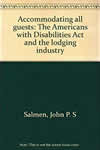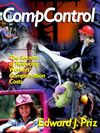All Articles
Accident Prevention & Safety
Healthcare
Alternative Dispute Resolution (ADR)
Human Resources
Anger Management & Related Issues
Injury
Attorney Fees
Internet Marketing
Audio Forensics
Law Enforcement
Bacteria - Fungus - Mold Investigation
Laws & Procedures
Biokinetics
Logistics - Reverse Logistics
Blockchain Information
Mediation
Branding - Brand Management
Medical Records Review
Chemical Industry
Medicine
Construction
Meditation
Criminology
Mining
Design
Obstetrics - Gynecology (OBGYN)
Digital Forensics
OSHA
Discovery & Electronic Discovery
Pharmacy & Pharmacology
Economics
Pools and Spas (Recreational)
Energy - Utilities
Premises Liability
Exercise & Fitness
Securities
Expert Witnessing
Slip, Trip & Fall
Finance
Telecommunication
Foot / Ankle Surgery
Terrorism - Homeland Security
Foreign Affairs - Geopolitics
Toxicology
Forensic Analysis
Transportation
Forensics
Workplace Violence
Hazardous Materials
Yoga
More...

DAMAGES-PAGE ARTICLES MAIN PAGE
. Contact Us if you are interested in having your work published on our website and linked to your Profile(s).
All Articles
Accident Prevention & Safety
Human Resources
Architecture
Hydrology
Banking
Injury
Biokinetics
Insurance Coverage Analysis
Blockchain Information
International Trade
Branding - Brand Management
Investigation & Surveillance
Business Management
Law Enforcement
Computers
Manufacturing
Counseling
Marine - Maritime
Damages
Mining
Dental - Dentistry
Neuropsychology
Education & Schools
Nonprofit Organizations
Elder Abuse
Obstetrics - Gynecology (OBGYN)
Engineering
Oil & Gas
Engines (Combustion - Diesel)
Pharmacy & Pharmacology
Enterprise Resource Planning (ERP)
Politics
Environment
Pools and Spas (Recreational)
Ethics / Ethical Duties
Premises Liability
Exercise & Fitness
Product Liability
Eyewitness Testimony
Professional Malpractice
Family Issues
Psychiatry
Forgery & Fraud
Recreation & Sports
Gems & Jewelry
Taxation
Hazardous Materials
Telecommunication
Healthcare
Toxicology
More...
Featured Articles
There are no active articles here at this time. Please use the search bar, try another category, or contact us if you would like to contribute an article.
This Article is unavailable. Contact Us
Search articles by title, description, author etc.
Sort Featured Articles
Featured resources
Sex, Politics & Religion at the...
by Douglas E. Noll, Esq
Accommodating all guests: The...
by John Salmen, AIA
Compcontrol: The Secrets of Reducing...
by Edward J. Priz, et al
Follow us










